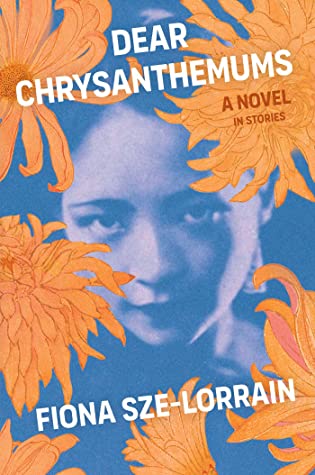 Dear Chrysanthemums: A Novel in Stories by Fiona Sze-Lorrain
Dear Chrysanthemums: A Novel in Stories by Fiona Sze-Lorrain Format: eARC
Source: supplied by publisher via Edelweiss
Formats available: paperback, ebook, audiobook
Genres: historical fiction, literary fiction
Pages: 176
Published by Scribner on May 2, 2023
Purchasing Info: Author's Website, Publisher's Website, Amazon, Barnes & Noble, Kobo, Bookshop.org, Better World Books
Goodreads
A startling and vivid debut novel in stories from acclaimed poet and translator Fiona Sze-Lorrain featuring deeply compelling Asian women who reckon with the past, violence, and exile—set in Shanghai, Beijing, Singapore, Paris, and New York.
“Cooking for Madame Chiang” set in 1946: Two cooks work for Madame Chiang Kai-shek and prepare a foreign dish craved by their mistress, which becomes a political weapon and and leads to their tragic end. “Death at the Wukang Mansion” set in 1966: Punished for her extramarital affair, a dancer is transferred to Shanghai during the Cultural Revolution and assigned to an ominous apartment in building whose other residents often depart in coffins. “The White Piano” set in 1996: A budding Asian pianist from New York settles down in Paris and is assaulted when a mysterious piano arrives from Singapore. “The Invisible Window” set in 2016: After their exile following the Tiananmen massacre, three women gather in a French cathedral to renew their friendship and reunite in their grief and faith.
Evocative, vivid, disturbing, and written with a masterful ear for language, Dear Chrysanthemums renders both a devastating portrait of diasporic life and inhumanity, as well as a tender web of shared memory, artistic expression, and love.
My Review:
In the beginning, or at least the chronological beginning of this “novel in stories”, there are two women in a third woman’s kitchen. That story, “Cooking for Madame Chiang, 1946” manages to both tell a complete story AND weave together all the threads that permeate the entire work in a way that seems to achieve more depth and more interconnectivity the more I think about it.
The two women in that kitchen, Little Green and Chang’er, are cooking for Madame Chiang Kai-Shek in 1946 after the end of the Second Sino-Japanese War, known in the West as World War II and just prior to the Chinese Communist Revolution.
All the stories in this collected novel relate back to those three women and what they represent, sometimes figuratively, often literally as many of the stories are centered around Chang’er’s descendants.
So this is a collection of stories of women’s perspectives on 20th century China, as seen through the eyes of Chang’er and her daughters and granddaughters who became part of the Chinese Diaspora in Singapore, while Little Green’s story is hers alone as her service to the Westernized Madame Chiang made her a target of the Revolution.
Some of the stories’ connections to Chang’er and Little Green are not obvious at first (“Death at the Wukang Mansion, 1966” is one such story) and are only revealed as the reader follows the course of the braided novel back and forth through time.
It is also symbolic that all of these stories take place in years that end in the number six, from the 1946 of “Cooking for Madame Chiang” to the 2016 of “The Invisible Window”. The number six in Chinese divination signifies a “smooth life”, something that none of the women in these interconnected stories manages to achieve.
But in their less than smooth lives we get glimpses of the choppy seas that each of them navigated, whether they remained in China or fled to far-distant shores, and how the experiences that led or followed them impacted the rest of their lives – and their century.
Escape Rating B+: I left this collection feeling both enchanted and teased. Each story is a bit of a treasure hunt and a chef’s kiss wrapped into one. The treasure is figuring out how each woman connects to the others. The chef’s kiss is in the way that each story is complete in itself, beautifully told, but still leaves the reader wishing for more – not necessarily more of that story in particular, but more of the history and background in general. The way the stories are each told make it clear that there are vast depths to be explored that this collection can only hint at.
I was also struck by the way that Dear Chrysanthemums manages to achieve the result that last week’s Daughters of Muscadine fell short of. Both are attempts to tell a kind of braided, linked story through a collection of stories, but Daughters missed that connectedness where Dear Chrysanthemums achieved it in every story through that treasure hunt of hints and references and casting back on long lives lived after tragedy and loss.
While there were a couple of stories that either didn’t work for me at the initial read (“Death at the Wukang Mansion”) or didn’t work at all (“The White Piano”), for the most part this collection told fascinating stories of women’s lives that hinted at so much to explore beneath the surface. I was initially a bit reluctant (last week’s reads were really frustrating) but I’m happy I picked up this gem after all.

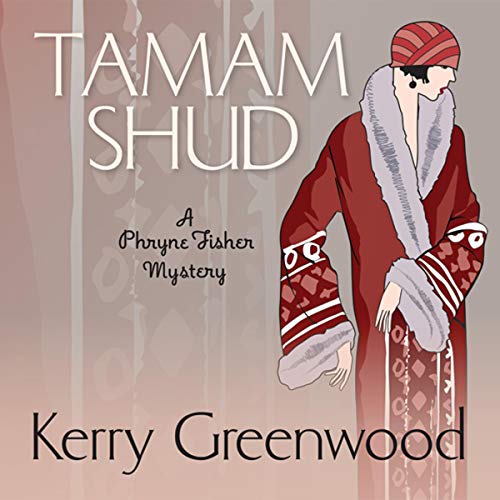 Tamam Shud: A Phryne Fisher Mystery by
Tamam Shud: A Phryne Fisher Mystery by 
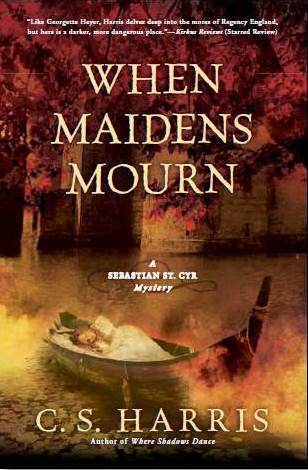 When Maidens Mourn (Sebastian St. Cyr, #7) by
When Maidens Mourn (Sebastian St. Cyr, #7) by 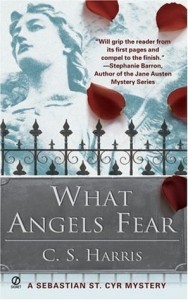 The legend of King Arthur has always loomed large over Britain, but even more so at times when the current monarch is less than popular. Or, as in the case of the corpulent, aging, spendthrift Prinny, Prince Regent for his mentally incapacitated father George III, not just unpopular but downright detested for his endless need for more money and therefore higher taxes to maintain his profligate lifestyle AND continue to prosecute Britain’s seemingly endless war with Napoleon and France.
The legend of King Arthur has always loomed large over Britain, but even more so at times when the current monarch is less than popular. Or, as in the case of the corpulent, aging, spendthrift Prinny, Prince Regent for his mentally incapacitated father George III, not just unpopular but downright detested for his endless need for more money and therefore higher taxes to maintain his profligate lifestyle AND continue to prosecute Britain’s seemingly endless war with Napoleon and France.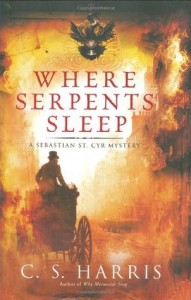 Escape Rating A+: The
Escape Rating A+: The 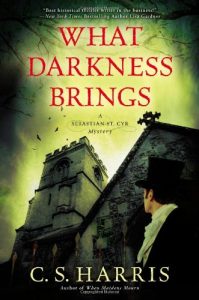 At least, it’s uncertain at this particular point in the series. I began reading St. Cyr almost 20 years ago, at the beginning with
At least, it’s uncertain at this particular point in the series. I began reading St. Cyr almost 20 years ago, at the beginning with 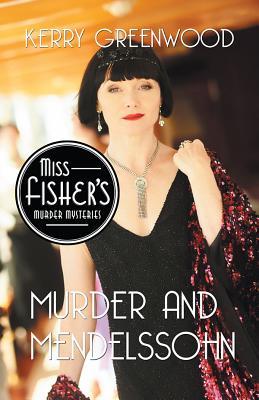 Murder and Mendelssohn (Miss Fisher's Murder Mysteries, 20) by
Murder and Mendelssohn (Miss Fisher's Murder Mysteries, 20) by  For Detective Inspector Jack Robinson, who is most definitely NOT the Jack Robinson of the TV series, it’s a case that he fully admits is not in his area of expertise – so he solicits his friend Phryne Fisher’s help.
For Detective Inspector Jack Robinson, who is most definitely NOT the Jack Robinson of the TV series, it’s a case that he fully admits is not in his area of expertise – so he solicits his friend Phryne Fisher’s help.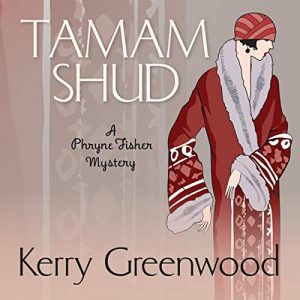 So a LOT happening, and a ton of fun in the resolution, with more than a bit of derring-do and just a soupçon of bittersweetness. A thoroughly delightful serving of Phryne Fisher’s fascinating brew. And I loved every minute of it!
So a LOT happening, and a ton of fun in the resolution, with more than a bit of derring-do and just a soupçon of bittersweetness. A thoroughly delightful serving of Phryne Fisher’s fascinating brew. And I loved every minute of it!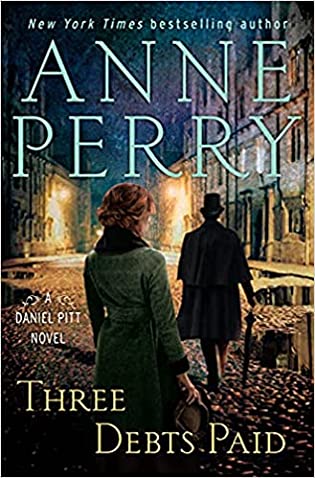 Three Debts Paid (Daniel Pitt, #5) by
Three Debts Paid (Daniel Pitt, #5) by 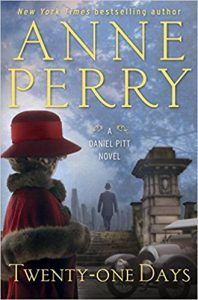 The older Pitts are still active and are secondary characters in this later series featuring their son Daniel, a series which began with the excellent
The older Pitts are still active and are secondary characters in this later series featuring their son Daniel, a series which began with the excellent  I found that teetering balance to be the most compelling part of the story, but that is not to shortchange either the frustrations of Daniel’s legal case or the pulse-pounding desperation and intellectual puzzle of the hunt for the serial killer. In combination, they kept me glued to the story until I finished with relief at the outcome as well as a bit of a sad because this wonderful series is nearly at an end.
I found that teetering balance to be the most compelling part of the story, but that is not to shortchange either the frustrations of Daniel’s legal case or the pulse-pounding desperation and intellectual puzzle of the hunt for the serial killer. In combination, they kept me glued to the story until I finished with relief at the outcome as well as a bit of a sad because this wonderful series is nearly at an end.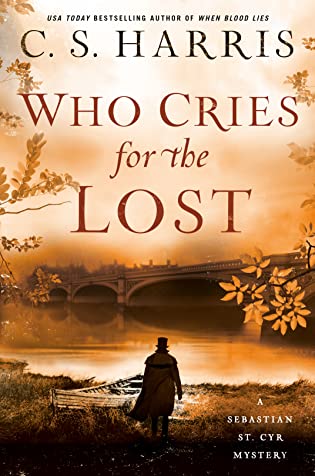 Who Cries for the Lost (Sebastian St. Cyr, #18) by
Who Cries for the Lost (Sebastian St. Cyr, #18) by 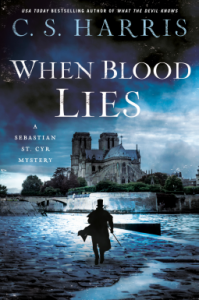 St. Cyr served as a cavalry officer and sometimes an undercover operative in the worst places and days of the Napoleonic Wars. Wars that are not quite over when this entry in the series takes place in June of 1815, barely a season after the events of the previous book in the series, the excellent
St. Cyr served as a cavalry officer and sometimes an undercover operative in the worst places and days of the Napoleonic Wars. Wars that are not quite over when this entry in the series takes place in June of 1815, barely a season after the events of the previous book in the series, the excellent 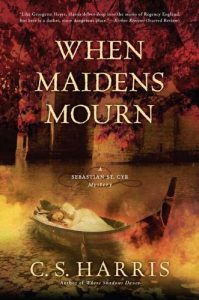 What kept this reader going through the story was the skill with which the two threads were woven together. Was Sedgewick killed for his many, many misdeeds? Or was he killed to stop, or conceal, treason or espionage? Or was it purely revenge? Or all of the above? Getting that question answered while exploring St. Cyr’s world made for a compelling read. As it has every single time since
What kept this reader going through the story was the skill with which the two threads were woven together. Was Sedgewick killed for his many, many misdeeds? Or was he killed to stop, or conceal, treason or espionage? Or was it purely revenge? Or all of the above? Getting that question answered while exploring St. Cyr’s world made for a compelling read. As it has every single time since 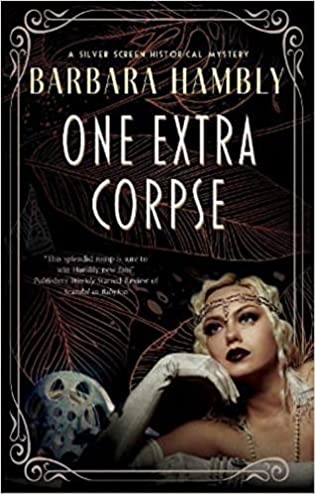 One Extra Corpse (Silver Screen Historical Mystery #2) by
One Extra Corpse (Silver Screen Historical Mystery #2) by 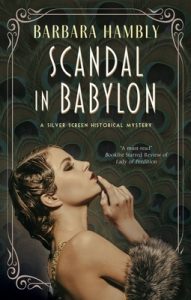 Escape Rating A: This was surprisingly meaty for a book whose cover kind of screams camp with vamp, but then, the silent movie era did have to maximize flash and style to convey emotion. After all, the characters couldn’t use their own words, or even the scriptwriter’s words.
Escape Rating A: This was surprisingly meaty for a book whose cover kind of screams camp with vamp, but then, the silent movie era did have to maximize flash and style to convey emotion. After all, the characters couldn’t use their own words, or even the scriptwriter’s words.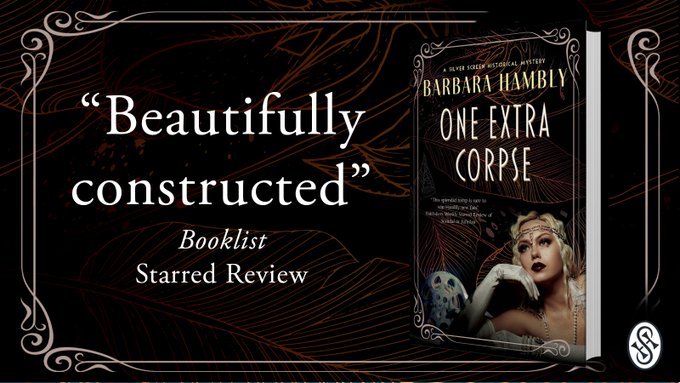

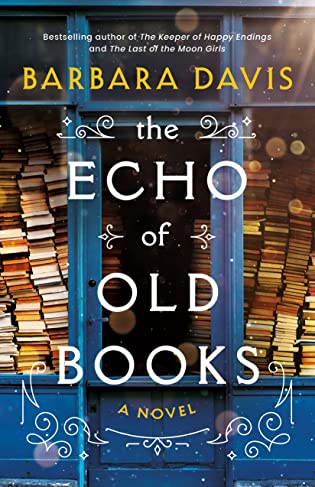 The Echo of Old Books by
The Echo of Old Books by 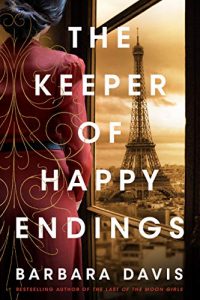 And their own searing, scarring pasts. The more we learn about both couples, the more we hope for HEAs all around – no matter how impossible that might seem. We become invested in both stories every bit as much as Ashlyn does Belle’s.
And their own searing, scarring pasts. The more we learn about both couples, the more we hope for HEAs all around – no matter how impossible that might seem. We become invested in both stories every bit as much as Ashlyn does Belle’s.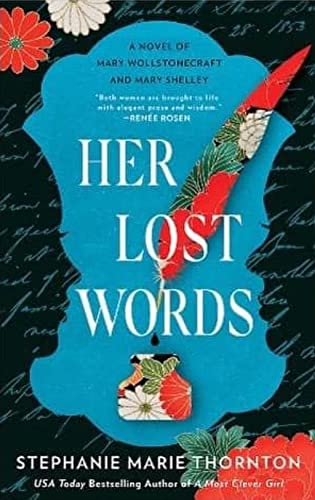 Her Lost Words: A Novel of Mary Wollstonecraft and Mary Shelley by
Her Lost Words: A Novel of Mary Wollstonecraft and Mary Shelley by  But the tides of history turn, and for more than a century after Mary Shelley’s death it was HER great work that captured the limelight – and much of the popular imagination – while her mother’s achievements were covered in the shadows cast by her daughter’s monster, the doctor who made him and the literary genre they started.
But the tides of history turn, and for more than a century after Mary Shelley’s death it was HER great work that captured the limelight – and much of the popular imagination – while her mother’s achievements were covered in the shadows cast by her daughter’s monster, the doctor who made him and the literary genre they started.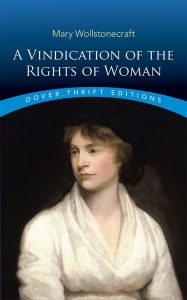 Escape Rating B: Someone needs to do a literary survey of just how many fictional and even non-fictional biographies of famous women in history begin with a dramatic scene of parental or spousal abuse. Not that I do not believe it’s true in the case of the older Mary, more that it should be telling in a profound way that it happened so damn frequently but somehow that message never seems to penetrate the male psyche. Which is a part of what made
Escape Rating B: Someone needs to do a literary survey of just how many fictional and even non-fictional biographies of famous women in history begin with a dramatic scene of parental or spousal abuse. Not that I do not believe it’s true in the case of the older Mary, more that it should be telling in a profound way that it happened so damn frequently but somehow that message never seems to penetrate the male psyche. Which is a part of what made  I wanted to be all in on this one and I just wasn’t. I’m still interested in Wollstonecraft and Shelley, and will probably refer myself to
I wanted to be all in on this one and I just wasn’t. I’m still interested in Wollstonecraft and Shelley, and will probably refer myself to 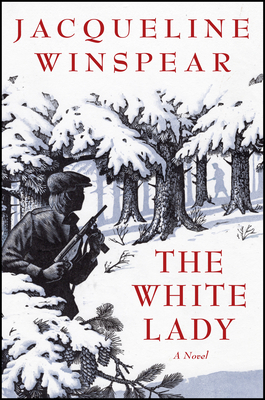 The White Lady by
The White Lady by 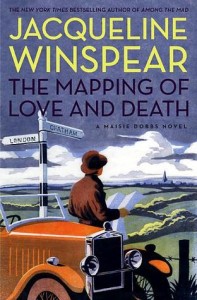 For the past several years of her cases (since
For the past several years of her cases (since 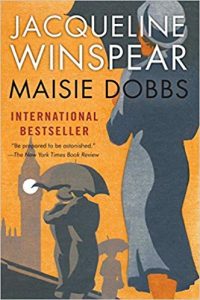 Escape Rating B: I ended this book with a LOT more mixed feelings than I expected going into it. I enjoy the
Escape Rating B: I ended this book with a LOT more mixed feelings than I expected going into it. I enjoy the